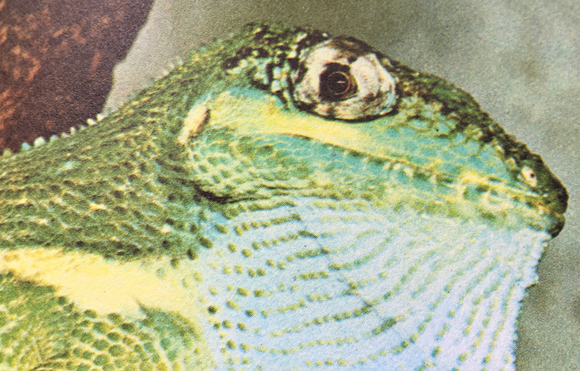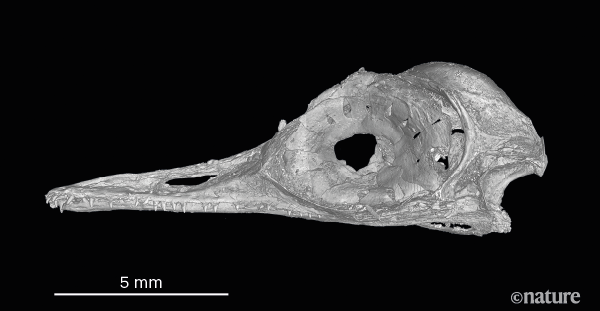New Evidence Casts Doubt over Oculudentavis
Is Oculudentavis a Member of the Archosauria?
On the 11th March (2020), Everything Dinosaur posted up a blog article featuring the discovery of a remarkably well-preserved fossil skull that had been found in amber from northern Myanmar.
To read our blog post: Hummingbird-sized Dinosaur from Burmese Amber.
Oculudentavis khaungraae
Following publication, a number of academics have questioned the conclusions made by Xing et al with regards to this fossil representing a member of the Maniraptora. It is certainly true that the validity of the interpretation of the fossil skull as maniraptoran has subsequently been challenged post publication (Wang Wei et al). They comment that the shape of the skull is not unique to archosaurs, many lizards for example, show similar characteristics, the phylogenetic analysis is questioned, along with the apparent absence of an antorbital fenestra (an opening in the skull of all known archosaurs between the orbit and the naris).
The Very Bird-like Skull of Oculudentavis khaungraae But Can Appearances be Deceptive?
Picture credit: Xing et al (Nature)
It is suggested that the skull actually comes from a lizard and that the specimen is not from an archosaur at all.
The original publication noted that the spoon-shaped bones that make up the sclerotic ring were reminiscent of that seen in the eye sockets of lizards. Scleral bones of this shape have never been found in a dinosaur or a bird, it is suggested that these bones support the idea that the fossil is that of a lizard and not a member of the Archosauria.
Trouble with the Teeth
The roots of the tiny teeth do not seem to be located in sockets in the jawbone (thecodont dentition). This was a peculiar feature remarked upon by a number of academics once this paper had been widely circulated. Teeth located in sockets is a characteristic of toothed-archosaurs such as crocodilians and the dinosaurs. Other types of tetrapod also show this tooth morphology, but in Oculudentavis the teeth are not in sockets but either fused to the jaw (acrodont dentition) or located within grooves that can be found along the length of the jaw bones (pleurodont dentition).
The number of teeth in the jaw far exceeds that known for any type of ancient bird. The tooth line extending under the eye-socket (orbit), is also highly unusual. Such anatomical traits are associated with the Squamata (lizards and snakes), not with the Archosauria.
These arguments (along with others, such as the absence of feathers), have led some scientists to question the conclusions made in the original Nature publication. Oculudentavis might not be a bird or a dinosaur, it might represent the preserved remains of a lizard.
An Anolis Lizard (A. equestris) Displaying its Throat Sac

Picture credit: Everything Dinosaur
The scramble to publish can sometimes lead to a lack of peer review opportunities and a foreshortening of pre-publication correspondence amongst academics. When the “Nature” paper was published it certainly created a great deal of interest in the wider media. Sadly, we suspect that any challenge to the original paper’s conclusions or subsequent revision will not attract anywhere near as much publicity.
We shall await developments.
Perhaps, in future we could refer to such controversies as “Oculudentavism”.
The Everything Dinosaur website: Everything Dinosaur.


